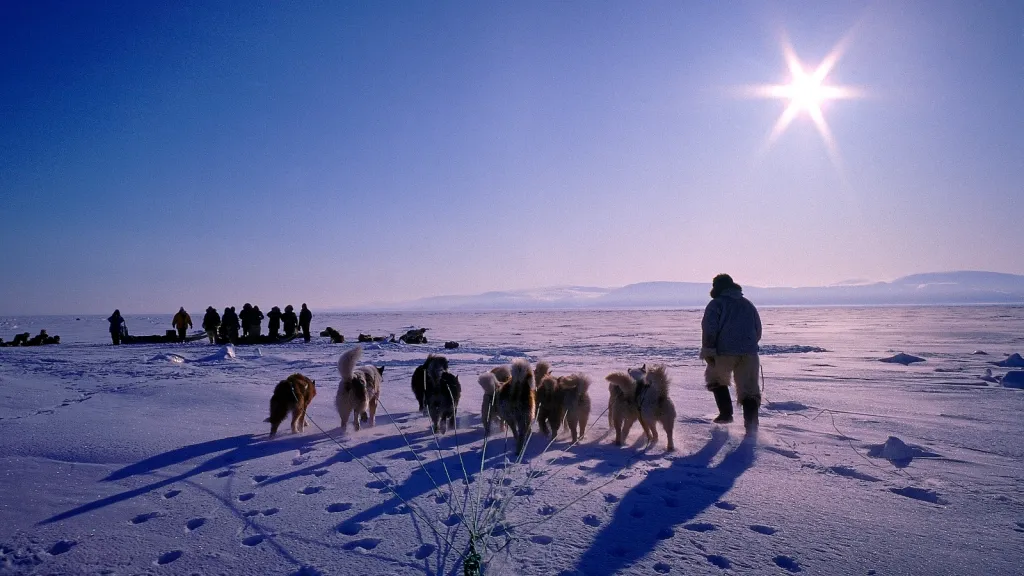Why are Land Acknowledgements important?
A land acknowledgement highlights the ongoing stewardship by Indigenous peoples, uplifts Indigenous voices, and helps audiences and institutions reconsider their roles within a broader community. It’s a sign of respect that’s common in Canada, Australia, New Zealand, tribal nations, and increasingly in the U.S. It’s also a step toward recognizing that multiple perspectives are needed to address climate change.
Nikoosh Carlo

According to the Native Governance Center,
“It is important to understand the longstanding history that has brought you to reside on the land, and to seek to understand your place within that history. Land acknowledgements do not exist in a past tense, or historical context: colonialism is a current ongoing process, and we need to build our mindfulness of our present participation.” Northwestern University
“When we talk about land, land is part of who we are. It’s a mixture of our blood, our past, our current, and our future. We carry our ancestors in us, and they’re around us. As you all do.” Mary Lyons (Leech Lake Band of Ojibwe)
TIPS FOR CREATING AN INDIGENOUS LAND ACKNOWLEDGMENT STATEMENT
Key components:
Start with self-reflection. Before starting work on your land acknowledgment statement, reflect on the process:
- Why am I doing this land acknowledgment? (If you’re hoping to inspire others to take action to support Indigenous communities, you’re on the right track. If you’re delivering a land acknowledgment out of guilt or because everyone else is doing it, more self-reflection is in order.)
- What is my end goal? (What do you hope listeners will do after hearing the acknowledgment?)
- When will I have the largest impact? (Think about your timing and audience, specifically.)
Do your homework. Put in the time necessary to research the following topics:
- The Indigenous people to whom the land belongs.
- The history of the land and any related treaties.
- Names of living Indigenous people from these communities. If you’re presenting on behalf of your work in a certain field, highlight Indigenous people who currently work in that field.
- Indigenous place names and language.
- Correct pronunciation for the names of the Tribes, places, and individuals that you’re including.
Use appropriate language. Don’t sugarcoat the past. Use terms like genocide, ethnic cleansing, stolen land, and forced removal to reflect actions taken by colonizers.
Use past, present, and future tenses. Indigenous people are still here, and they’re thriving. Don’t treat them as a relic of the past.
Land acknowledgments shouldn’t be grim. They should function as living celebrations of Indigenous communities. Ask yourself, “How am I leaving Indigenous people in a stronger, more empowered place because of this land acknowledgment?” Focus on the positivity of who Indigenous people are today.
Additional factors to consider:
Don’t ask an Indigenous person to deliver a “welcome” statement for your organization. Cantemaza McKay (Spirit Lake Nation) explains this very clearly. Check out our land acknowledgment event livestream, and hear his comments at the 27-minute mark.
Build real, authentic relationships with Indigenous people. In addition to normal employment and family obligations, Indigenous people are working to heal their traumas, learn their languages, and support their nations. If you reach out for help, lead the conversation by asking an Indigenous person what you can do for them. Chances are, they’re likely overworked and could use your help.
Compensate Indigenous people for their emotional labor. If you do plan to reach out to an Indigenous person or community for help, compensate them fairly. Too often, Indigenous people are asked to perform emotional labor for free.
Understand displacement and how that plays into land acknowledgment. Land acknowledgment is complicated. Remember that the United States government displaced many Tribes from land before treaties were signed.
There are many types of land acknowledgments. Don’t expect to find a specific formula or template. Land acknowledgments that come from Indigenous people vs. non-Indigenous people look different, too.
Take action:
Land acknowledgment alone is not enough. It’s merely a starting point. Ask yourself: how do I plan to take action to support Indigenous communities? Some examples of ways to take action:
- Support Indigenous organizations by donating your time and/or money.
- Support Indigenous-led grassroots change movements and campaigns. Encourage others to do so.
- Commit to returning land. Local, state, and federal governments around the world are currently returning land to Indigenous people. Individuals are returning their land, too. Learn more about your options to return your land.
At the end of the day, remember:
Starting somewhere is better than not trying at all. We need to share in Indigenous peoples’ discomfort. They’ve been uncomfortable for a long time. Dr. Kate Beane (Flandreau Santee Dakota and Muskogee Creek) says, “We have to try. Starting out with good intentions and a good heart is what matters most.”
Visit our resources page for more helpful land acknowledgment tools! And read our own land acknowledgment statement: The Land We’re On.
